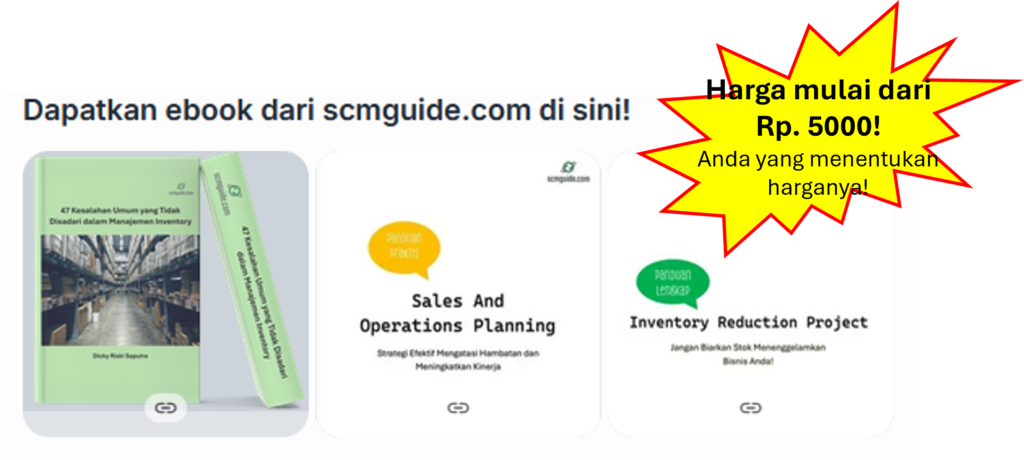In the fast-paced world of supply chain operations, headcount optimization is not just about numbers—it’s about creating a harmonious balance that drives efficiency and ensures seamless operations.
Too few employees? You risk delays, bottlenecks, and frustrated customers. Too many? You face escalating labor costs and diminishing returns. Achieving the perfect balance is critical for operational excellence and long-term sustainability.
This blog will take you on a journey to understand why managing headcount matters, how it impacts your supply chain, and strategies you can adopt to strike that perfect balance. Let’s dive in!
Before we go further into this topic, don’t forget to follow my LinkedIn account. You’ll get more helpful insights on supply chain management there.
Table of Contents
Why Headcount Matters in Supply Chain Operations
The workforce is the backbone of any supply chain operation. From managing warehouses and coordinating shipments to ensuring customer orders are fulfilled on time, your employees are essential to keeping the supply chain running.
However, the challenges begin when the headcount is misaligned with operational needs. Overstaffing, for instance, can strain your budget, lower efficiency, and even dampen employee morale due to a lack of meaningful work. On the flip side, understaffing can result in missed deadlines, errors in order processing, and ultimately, dissatisfied customers.
The ideal staffing level varies across organizations and industries. Factors such as seasonal demand fluctuations, technological advancements, supply chain disruptions, and economic conditions all play a role in determining your workforce needs.
The Ripple Effect of Incorrect Staffing
Let’s paint a clearer picture of what happens when your headcount doesn’t match your operational requirements.
- Understaffing: Imagine a warehouse during peak holiday season with only half the required staff. Delays become inevitable, errors in shipments increase, and customer complaints pile up. Not only does this hurt your reputation, but it also results in financial losses due to missed sales opportunities.
- Overstaffing: Now, picture the same warehouse during the off-season but with twice the required staff. Labor costs skyrocket, and the excess workforce may lead to unproductivity and disengagement. Over time, this can erode team morale and affect overall efficiency.
Striking the right balance is not just a matter of financial prudence—it’s about sustaining the agility and resilience your supply chain needs to thrive.
You might also like:
- Without the Right KPIs, You Can’t See the True Performance of Your Supply Chain
- How to Fix Major Supply Chain Management Mistakes Without Hurting Team Morale
Key Strategies for Optimizing Headcount
Workforce Planning and Forecasting
Effective workforce planning starts with understanding your demand patterns and aligning them with your staffing requirements.
- Accurate Demand Forecasting: Utilize historical data, market trends, and advanced analytics to predict demand fluctuations. A reliable forecast helps you plan your workforce needs more accurately, reducing the risk of overstaffing or understaffing.
- Scenario Planning Tools: Equip yourself with tools that allow you to simulate various demand scenarios. For instance, what happens if a supply chain disruption occurs? With the right tools, you can preemptively adjust staffing levels to navigate potential challenges.
Leveraging Technology and Automation
Technology has revolutionized supply chain operations, offering countless opportunities to optimize your workforce.
- Automation for Repetitive Tasks: Identify tasks that can be automated, such as inventory counting, order processing, or pallet stacking. Automation not only reduces the need for excessive manual labor but also minimizes errors.
- Advanced Systems Integration: Implement systems like Warehouse Management Systems (WMS), Transportation Management Systems (TMS), and AI-driven tools. These technologies streamline operations, enhance decision-making, and enable you to deploy your workforce more effectively.
Flexible Staffing Solutions
Flexibility is a game-changer when it comes to managing workforce needs during unpredictable times.
- Temporary Staffing Agencies: Partnering with staffing agencies can help you quickly scale up during peak periods without committing to long-term contracts.
- Freelancers and Contractors: Engage professionals for specific projects or tasks to maintain agility while addressing immediate needs.
- On-Call and Part-Time Employees: Building a pool of on-call or part-time workers provides you with a buffer to manage fluctuating workloads.
- Optimized Shift Scheduling: Use scheduling software to design efficient shift patterns. This ensures optimal coverage during busy periods while avoiding unnecessary overlaps.
Employee Development and Upskilling
A well-trained and versatile workforce can significantly reduce your dependency on excessive headcount.
- Continuous Training Programs: Equip your employees with the latest skills, whether it’s operating new technologies or improving their problem-solving abilities.
- Cross-Training: Encourage employees to learn multiple roles. This not only enhances flexibility but also ensures smooth operations during absences or transitions.
- Succession Planning: Identify high-potential employees and prepare them for leadership roles. A strong succession plan minimizes disruptions caused by turnover or retirements.
Performance Measurement and Metrics
What gets measured gets managed. Establishing the right metrics is essential for maintaining optimal staffing levels.
- Define KPIs: Focus on metrics like labor productivity, error rates, and customer satisfaction to gauge the effectiveness of your headcount strategy.
- Regular Reviews: Conduct periodic performance reviews to identify gaps and areas for improvement.
- Data-Driven Decisions: Use analytics to assess workforce performance and make informed adjustments to your staffing strategy.
You might also like:
- Smart Planning to Handle and Overcome Capacity Drops
- The Hidden Risks of System Automation in Supply Chain Management
Real-Life Examples of Headcount Optimization
Success Story: Seasonal Workforce Management
A leading e-commerce company faced significant challenges in managing its workforce during the holiday season. By leveraging demand forecasting tools and partnering with a temporary staffing agency, the company successfully scaled its workforce by 40% during the peak period. As a result, they improved order fulfillment rates by 20% and maintained high customer satisfaction levels.
Lesson Learned: Overstaffing During a Downturn
A manufacturing company overestimated its workforce needs during an economic downturn, leading to a 15% increase in labor costs. By revisiting their forecasting model and integrating data analytics, the company adjusted its headcount, saving $500,000 annually.
Navigating Common Challenges
While the strategies outlined above offer a solid foundation, implementing them isn’t without its hurdles.
- Resistance to Change: Employees may feel uneasy about automation or flexible staffing solutions. Clear communication about the benefits and providing reassurances can help mitigate resistance.
- Data Quality Issues: Poor-quality data can lead to inaccurate forecasts and misguided decisions. Investing in data cleaning and validation processes is essential.
- Balancing Costs and Benefits: While investing in technology and training is beneficial, it’s important to balance these costs with the expected returns.
The Role of Leadership in Headcount Optimization
Leadership plays a pivotal role in ensuring the success of any headcount strategy. By fostering a culture of adaptability and continuous improvement, leaders can inspire their teams to embrace changes and work towards common goals.
Additionally, leaders should prioritize transparent communication, keeping employees informed about staffing decisions and their impact on the organization. This builds trust and ensures alignment across the board.
Looking Ahead: Building a Resilient Workforce
In today’s dynamic supply chain landscape, the ability to adapt and optimize headcount is a competitive advantage. By leveraging technology, fostering flexibility, and prioritizing employee development, organizations can create a resilient workforce that thrives even in the face of uncertainty.
Remember, optimizing headcount isn’t about cutting costs—it’s about aligning your workforce with your business goals to deliver exceptional results. With a balanced approach, you can achieve both operational efficiency and employee satisfaction, paving the way for sustained success.
Conclusion
Optimizing headcount in supply chain operations is a nuanced process that requires careful planning, innovative thinking, and a commitment to continuous improvement. By understanding the impact of headcount, adopting strategic solutions, and addressing challenges proactively, you can transform your workforce into a powerful asset that drives business success.
In the ever-changing world of supply chains, one thing remains constant: the need for balance. So, take a step back, evaluate your current strategies, and embrace the opportunity to create a more efficient, adaptable, and productive operation. The future of your supply chain depends on it.
I hope you find it helpful!
Please share this article with your colleagues so they can also benefit. For more insights on supply chain management, follow my LinkedIn account. You’re free to use all articles on this blog for any purpose, even for commercial use, without needing to give credit.

 by
by 

